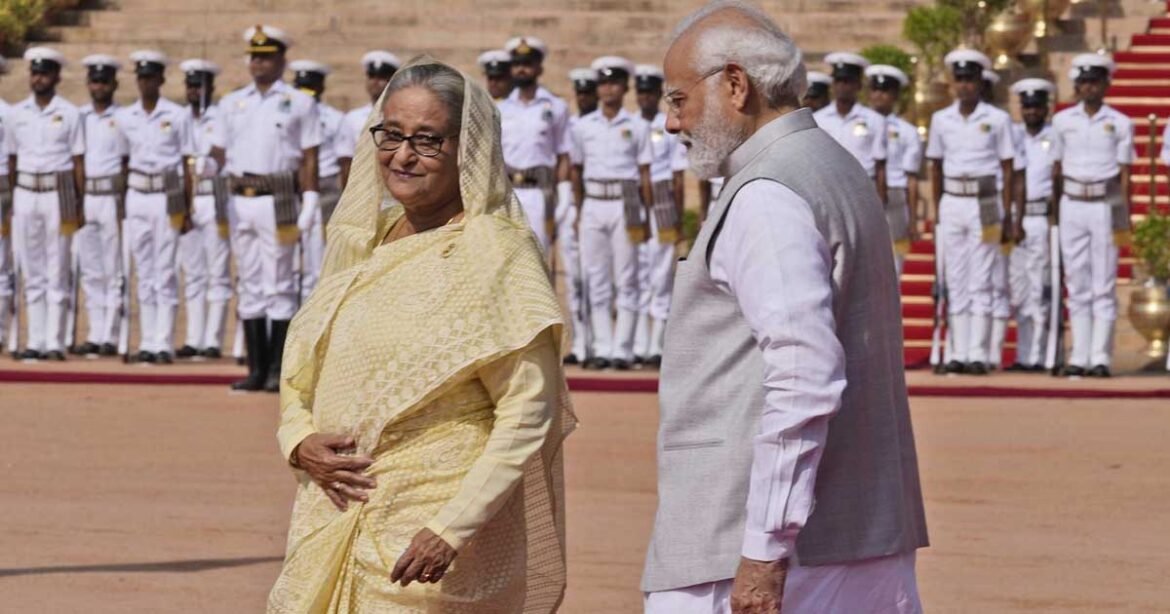Noteworthy participation will also come from Bangladesh Prime Minister Sheikh Hasina, attending as part of the BRICS Africa Outreach and BRICS Plus Dialogue initiatives
BRICS represents a formidable coalition comprising the five foremost emerging market economies in the world: Brazil, Russia, India, China, and South Africa. The 15th BRICS Summit is scheduled to take place in Johannesburg, South Africa, spanning from August 22 to August 24. This marks the return of in-person BRICS summits since 2019.
The summit serves as a pivotal juncture to assess the advancements made through collective endeavors and pinpoint prospects for forthcoming actions. From August 22 to 24, esteemed leaders will convene in Johannesburg, South Africa, in response to the invitation extended by Matamela Cyril Ramaphosa, the President of the Republic of South Africa. Noteworthy participation will also come from Bangladesh Prime Minister Sheikh Hasina, attending as part of the BRICS Africa Outreach and BRICS Plus Dialogue initiatives.
You can also read: IRI survey: 70% people think that Sheikh Hasina has done well
During the BRICS summit in Johannesburg, there is a promising likelihood of a meeting between Bangladesh Prime Minister Sheikh Hasina and Indian Prime Minister Narendra Modi. These prominent leaders from South Asia are set to visit the African nation during this week’s proceedings.
PM attending BRICS summit
The topic of BRICS came up during the meeting held in Geneva, Switzerland, last June between Cyril Ramaphosa and Prime Minister Sheikh Hasina. Subsequently, an invitation was extended to the prime minister to participate in the upcoming BRICS summit scheduled for early July.
According to insights from senior officials at the Ministry of Foreign Affairs, recent reports indicate that in the latter part of the previous month, the Prime Minister dispatched a letter to Cyril Ramaphosa, the current chairperson of BRICS and President of South Africa, confirming her acceptance to join the conference slated for August 22 to 24.
Sheikh Hasina-Modi may meet at the BRICS summit
During the BRICS summit in Johannesburg, South Africa, it is anticipated that Bangladesh Prime Minister Sheikh Hasina will have an encounter with Indian Prime Minister Narendra Modi. The Ministry of External Affairs of India has communicated that Prime Minister Modi is slated to engage in bilateral meetings with several of the assembled leaders during his visit to Johannesburg. Nonetheless, the specifics of these interactions remain unspecified.
In addition to this, Prime Minister Sheikh Hasina is also slated to participate in the G-20 conference set to convene in India in September. The 18th G20 Heads of State and Government Summit is earmarked for New Delhi, spanning from September 9 to 10. This event will bring closure to all the year’s activities and deliberations within the G-20 framework, involving ministers, senior officials, and representatives from civil society. Concluding the New Delhi summit, G20 leaders will issue a communiqué that encapsulates the focal points of discussion from ministerial and working group meetings, along with the commitments made by leaders upon achieving a consensus on these matters.
In a prior statement to journalists, AK Abdul Momen, the Minister of Foreign Affairs, expressed that New Delhi presents a more favorable setting than Johannesburg for a bilateral encounter with Indian Prime Minister Modi. Both nations are actively engaged in communication regarding this meeting. Momen also articulated that Africa is an emerging region, and Bangladesh is enthusiastic about forging stronger bonds with nations across the continent.
Furthermore, Momen highlighted, “Our connections with African nations aren’t as robust. We have established two diplomatic missions there. The Prime Minister will guide them to exert greater endeavors.”
BRICS Profile
BRICS represents an economic coalition consisting of Brazil, Russia, India, China, and South Africa. Initially established in June 2006 as BRIC with four member countries, South Africa joined in 2010, leading to the adoption of the new name, BRICS. The headquarters of this alliance is situated in the Shanghai Province of China. During its inception, many experts forecasted that this economic bloc would emerge as a dominant force in the global economy by 2050.
The primary goal of BRICS is to foster international peace, security, development, and cooperation, while also significantly contributing to global progress and assuming a pivotal role in the establishment of a just and equitable world order.
In 2014, the BRICS countries established the New Development Bank (NDB), formerly known as the BRICS Development Bank. This multilateral institution has the authority to provide support and funding for various public and private projects through mechanisms like bank loans, guarantees, equity participation, and other financial instruments.
Throughout the twenty-first century, Brazil, Russia, India, China, and South Africa have stood out as some of the fastest-growing emerging market economies, fueled by factors such as low labor costs, favorable demographics, strong global demand for their products, and abundant natural resources.
The inaugural BRIC summit was convened on June 16, 2009, in Yekaterinburg, Russia, where the leaders of the initial four countries formally announced their participation in the BRIC economic group. In December 2010, South Africa’s inclusion transformed the group into BRICS.
Since its inception, BRICS has exerted a positive influence on the global system. Individually, its member countries have ascended the ranks of the new economic order, positioning themselves as first-tier economies. For instance, China surged to become the world’s second-largest economy in 2010. Presently, India holds the tenth spot in terms of Gross Domestic Product (GDP) and is the fourth-largest economy when considering GDP at Purchasing Power Parity (PPP). By 2011, Brazil had risen to become the world’s sixth-largest economy, Russia currently stands as the ninth-largest economy, and South Africa holds the 26th position in terms of economic size.


